We explain what the classical Greco-Roman period is and the arts in which it stood out. Also, its innovations in science and features.
What is the Classic Period?
The classical period refers to the historical moment of the maximum height of intellectual , artistic and literary creations and manifestations of the Greco-Roman culture in the Ancient Age , located between the 8th century BC and the 2nd century AD.
The classical period is framed in the geographical space corresponding to the place where the Greco-Roman civilization developed, that is, the Mediterranean basin and the Near East , and which, thanks to the idealization of the purity of its intellectual and cultural concept, exercised marked influence on the organization of future Western culture .
This period is characterized by the presence of monarchies and a social elite dominated by dukes and nobles , who were in charge of patronage and serving as mentors for the brilliant musicians of the time, usually with low financial resources.
The cultural legacy of the classical period has been imperishable, it has continuously inspired the later stages of history , from the Middle Ages , the Renaissance , Classicism , Neoclassicism of the Modern Age and is preserved until our time, hence the classic name .
Historical period
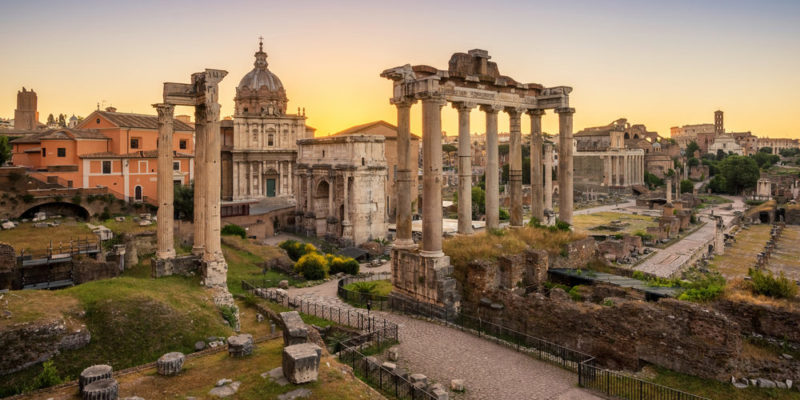
- Classic Greece. It corresponds to the period between the 5th to 4th centuries BC (500 – 338 BC).
- Beginning. Fall of the tyranny of Athens (500 BC).
- culminating milestone moment. Age of Pericles (Mid 5th century BC)
- Final. Death of Alexander the Great (323 BC).
- Classic Rome. It corresponds to the period between the 5th and 2nd centuries BC.
- Beginning. Overthrow of the Roman monarchy (509 BC).
- culminating milestone moment. The Roman Republic became the Roman Empire 1st century BC
- Final. Decline of the Roman Empire 3rd century AD
Mythology in the classical period
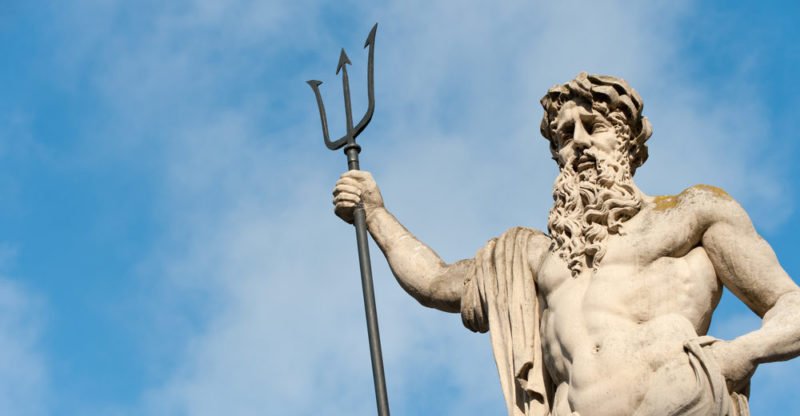
Although the names of the Greek gods are different from those of the Roman gods , both mythologies converge in the same deities, after adapting the Greek religion to the Roman religion.
Democracy in the classical period
This period was characterized by the political evolution of most Greek cities towards democracy , laying the foundations of what is known as Athenian democracy . In 510 BC C., the Spartan troops supported the Athenian nobles against Hippias, son of Pisistratus, Cleomenes I, king of Sparta, putting an end to the tyranny of Sparta. The citizens were grouped into ten tribes, according to the locality and not by birth or wealth, Cleisthenes, was elected first archon by the popular sectors (508 BC).
Philosophy of the classical period
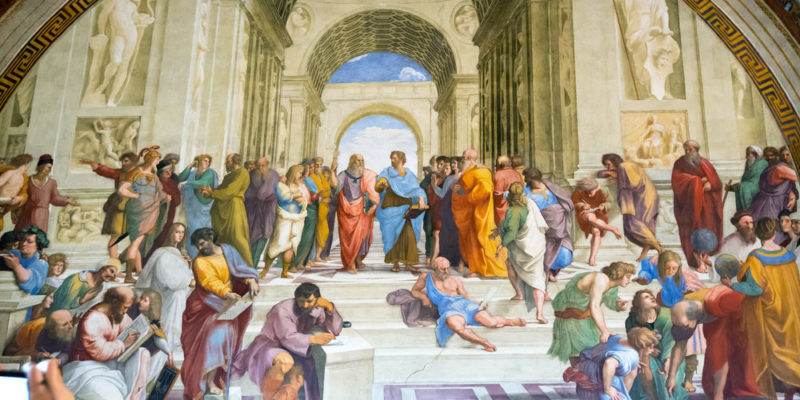
At the level of thought , the Greeks were not satisfied with the religious justifications of reality , they sought a rational explanation of human nature, for which they conceived Philosophy , one of the most valuable intellectual contributions to humanity. The school of sophists stands out, with figures such as Socrates , Gorgias, Xenophanes, Protagoras, Parmenides, Democritus, Empedocles, Anaxagoras, Plato and Aristotle .
classical period architecture
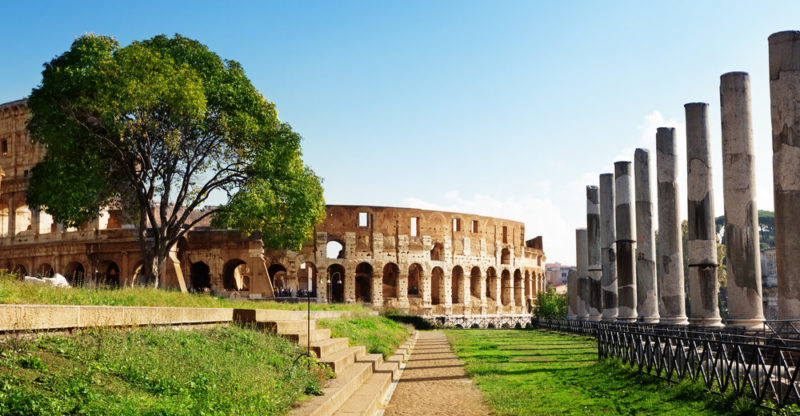
The Greco-Roman architectural expression is undoubtedly one of the most impressive proofs of the majesty of these civilizations. Many of those works survive to this day.
- Greek architecture. The most popular architectural forms of Greek culture are its temples, public buildings, also open-air theaters , public squares, mausoleums, stadiums, which reflected the sense of harmony and proportion, in three characteristic styles Doric, Ionic and Corinthian ; provoking wide effect in the later western architecture.
- Roman architecture. The architecture of Rome emerged from the Greek and is characterized by the solidity and grandeur of its works, such as temples, pantheons, triumphal arches, coliseums, basilicas, bridges, aqueducts, amphitheaters, circuses, forums; he adopted the three Greek styles Doric, Ionian and Corinthian, in addition to the Etruscan.
classical period sculpture
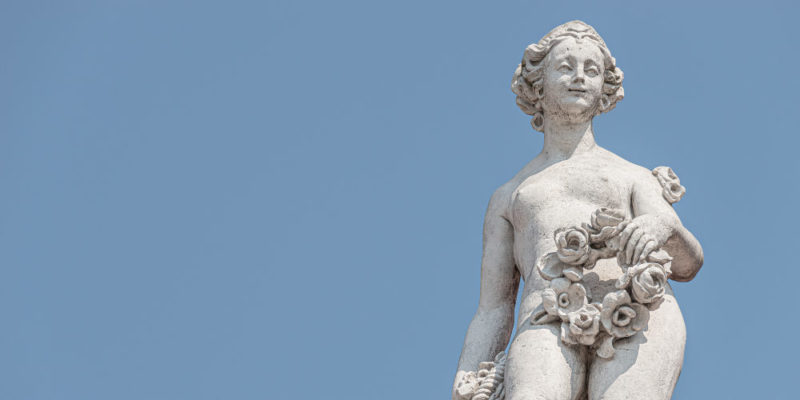
- Greek sculpture. Known as severe style , it covers a wide variety of genres: bronze sculpture , stelae, architectural reliefs . They excelled as sculptors Myron, Phidias and Polykleitos. Sculpture was the art that most expressed admiration for the human body , the culminating work is the series of the labors of Hercules.
- Roman sculpture. Being the Greek sculpture a constant referent of the Roman one, the most important Latin contribution in this art is the portrait due to its great realism, expressiveness and detail. The landscape relief also stands out.
classical period literature
- Greek Literature . Deployment of theater and poetry as more developed genres. Tragedy writers, such as Aeschylus, Sophocles, and Euripides; in comedy Aristophenes; and poets like Pindar, Homer and Hesiod. Among the most popular works are The Iliad and The Odyssey. As main representatives of the genre of oratory are Lísias, Isocrates, Esquínes and Demóstenes.
- Roman literature. Greek literature is traditionally present in all Latin literature, made novel contributions to the fable and rhetoric.
Classical music
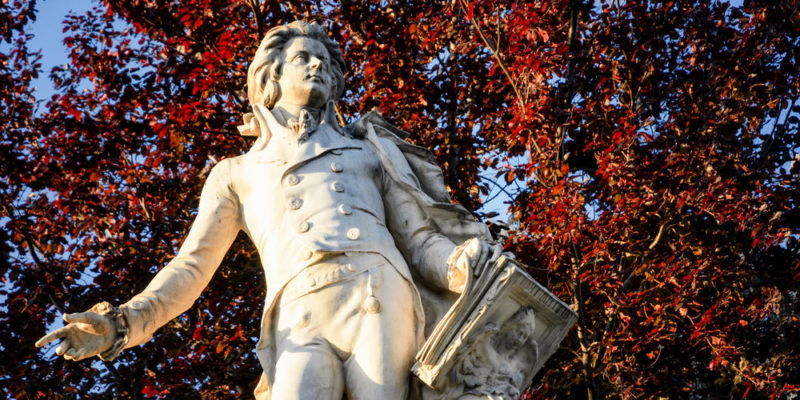
Classical music is inspired by the ideal of beauty and symmetry of Greek and Roman art of the 5th and 4th centuries before Christ , where nature and its perfection are the protagonists. Harmony, balance, not exaggerating and preferring aesthetics over unnecessary distraction are present there. Nor is it strange to discover sounds of nature in many of the compositions.
Sonatas are representative pieces of music from the classical period . In them the melodies are structured by sections or stages mutually related to each other. An opening , a development and a conclusion . It seems so simple and it’s that powerful. Some examples are: Beethoven’s Moonlight Sonata, the Pathetic and the Pastoral by the same author. Most are written and made for piano, as is the case with Mozart, in E flat, A major, C major, and so on.
The sciences of the classical period
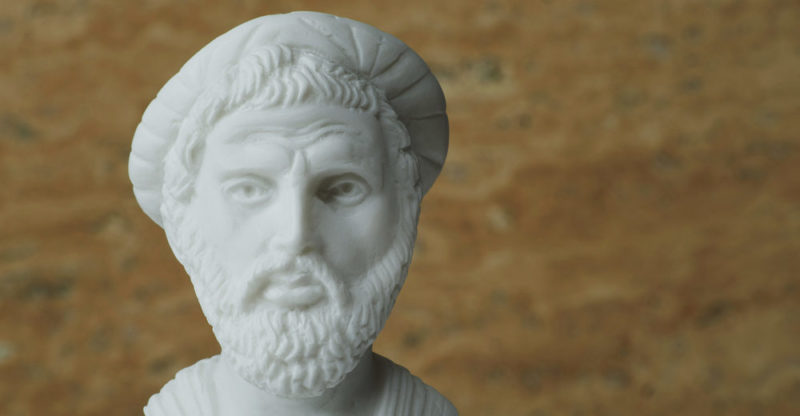
The sciences had a preponderant boom in the classical Greek civilization . The Greeks dared to seek rational answers to the phenomena of nature, moving away from mythological or supernatural concepts. Thales of Miletus is considered the first scientist in history; Pythagoras established the foundations of geometry; Hippocrates is qualified as the creator of scientific medicine; Archimedes discovered the theory of displacement of bodies.
Olympic Games in the classical period
They knew their maximum splendor in the classical Greek era, they were a series of sports competitions held in honor of the God Zeus , by delegates from the cities of ancient Greece and represented a religious, social and cultural manifestation.
roman law
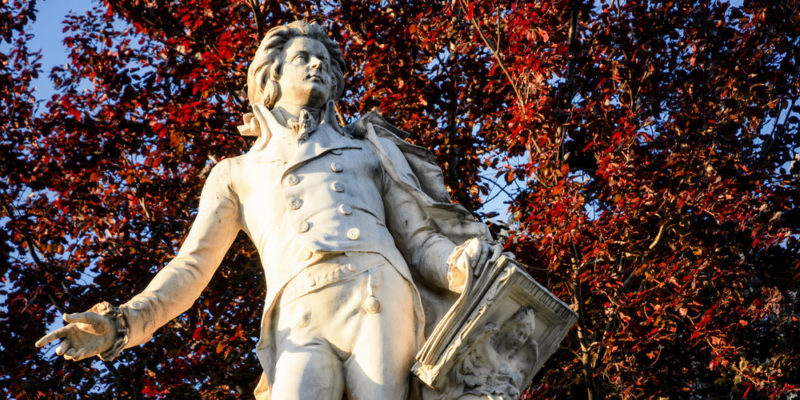
It was the legal system that governed Roman citizens and which in turn laid the foundations of current law , both in the private aspect, as well as public criminal and administrative. The compilation of the institutions, general principles and provisions of Roman Law in the Corpus Juris Civilis was sponsored by the Emperor Justinian.
The above content published at Collaborative Research Group is for informational and educational purposes only and has been developed by referring reliable sources and recommendations from technology experts. We do not have any contact with official entities nor do we intend to replace the information that they emit.














